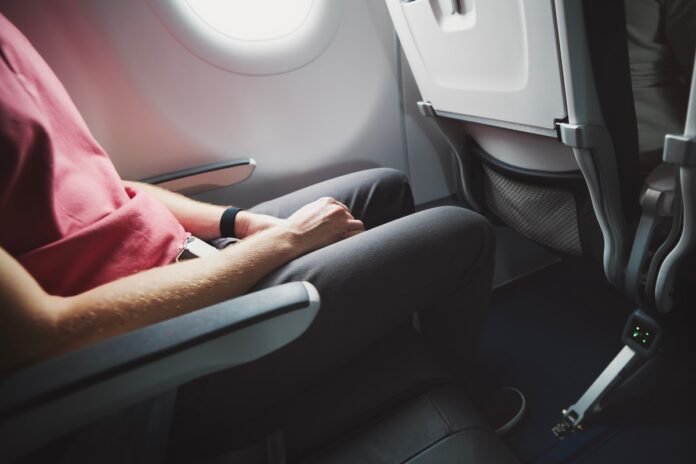Restless Leg Syndrome (RLS), with its relentless urge to move the legs, can be an unwelcome companion on any journey. Whether you’re embarking on a long-haul flight, setting off on a road trip adventure, or simply sitting for extended periods during a train ride, the discomfort caused by RLS can be disruptive and frustrating. However, fear not, wanderlust seekers!
In this article, we’ll unveil ten innovative ways to alleviate the symptoms of Restless Leg Syndrome while traveling, allowing you to fully embrace the joys of exploration and wanderlust without the unwelcome interruption of restless legs. With these effective strategies up your sleeve, you’ll be well-equipped to conquer RLS and enjoy your journeys to the fullest! So, let’s dive into the world of travel-friendly remedies for Restless Leg Syndrome and discover the freedom of movement and tranquility during your travels.
Ways to Treat Restless Leg Syndrome
Restless Leg Syndrome (RLS) can be a bothersome condition that disrupts your sleep and daily activities. Fortunately, there are several ways to find relief. Regular exercise, practicing relaxation techniques, and maintaining a consistent sleep schedule can help alleviate symptoms. Additionally, implementing a balanced diet, avoiding caffeine and nicotine, and applying heat or cold therapy to your legs can provide further comfort. Remember, it’s essential to consult with a healthcare professional for personalized advice and treatment options. With these simple yet effective strategies, you can regain control over your restless legs and embrace a more peaceful and restful life.
Here are 10 ways to treat Restless Leg Syndrome (RLS) while traveling:
- Stay Hydrated: Dehydration can worsen RLS symptoms, so make sure to drink plenty of water throughout your journey.
- Stretch and Exercise: Engage in regular leg stretches and light exercises like walking or jogging to promote circulation and reduce restlessness.
- Compression Socks: Wear compression socks or stockings to improve blood flow and alleviate discomfort in your legs.
- Massage and Self-Massage: Give your legs a gentle massage or use a foam roller to relieve tension and relax the muscles.
- Warm or Cold Therapy: Apply a warm or cold pack to your legs to soothe the sensations associated with RLS.
- Practice Relaxation Techniques: Incorporate deep breathing exercises, meditation, or mindfulness techniques to relax your body and reduce stress, which can contribute to RLS symptoms.
- Avoid Trigger Foods and Substances: Steer clear of caffeine, nicotine, and alcohol, as they can exacerbate restless leg symptoms.
- Medication and Supplements: Consult your doctor about appropriate medications or supplements that can help manage RLS symptoms while traveling.
- Adjust Your Sleeping Environment: Create a comfortable sleep environment by ensuring a supportive pillow, a quiet setting, and a cool temperature to aid in better sleep and reduce RLS episodes.
- Maintain a Consistent Sleep Schedule: Stick to a regular sleep routine, even while traveling, to regulate your body’s internal clock and reduce the occurrence of RLS symptoms.
Remember, while these strategies can provide relief, it’s crucial to seek medical advice and discuss treatment options with your healthcare provider for a comprehensive approach to managing Restless Leg Syndrome.
How to Stop Restless Legs Immediately
You can treat restless leg syndrome while on the move. Here are some bullet points summarizing techniques to help alleviate restless legs:
- Movement and stretching exercises
- Massaging the legs
- Applying heat or cold therapy
- Distracting the mind with engaging activities
- Practicing relaxation techniques like deep breathing or meditation
- Avoiding triggers such as caffeine, nicotine, and alcohol
- Creating a calm sleep environment
- Considering medications under the guidance of a healthcare professional
Please note that these techniques may provide temporary relief while travelling with restless leg syndrome, and it’s important to consult a healthcare professional for personalized advice and treatment options.
Recommended: How to Stop Vomiting while Travelling
What Causes Restless Leg Syndrome
The exact cause of Restless Leg Syndrome (RLS) is still not fully understood. However, several factors have been identified as potential contributors to the development of RLS:
- Genetic Factors: RLS tends to run in families, suggesting a genetic component. Specific gene variants have been associated with an increased risk of developing the condition.
- Dopamine Imbalance: Disruptions in the neurotransmitter dopamine, which plays a role in controlling muscle movement, have been linked to RLS. It is believed that an imbalance in dopamine levels in the brain may contribute to the development of the condition.
- Iron Deficiency: Insufficient iron levels or abnormal iron metabolism in the brain can trigger RLS symptoms. Iron is essential for dopamine production and proper nerve function, so its deficiency can affect the signaling pathways involved in RLS.
- Other Medical Conditions: Certain medical conditions and underlying factors can increase the likelihood of developing RLS. These include peripheral neuropathy, kidney failure, pregnancy, diabetes, and Parkinson’s disease.
- Medications and Substances: Certain medications such as antihistamines, antidepressants, and anti-nausea drugs have been associated with triggering or worsening RLS symptoms. Additionally, the use of caffeine, alcohol, and tobacco can exacerbate the condition.
- Chronic Diseases: Chronic diseases like fibromyalgia, rheumatoid arthritis, and peripheral artery disease have been linked to an increased risk of RLS.
It’s important to note that while these factors are associated with RLS, not everyone with these risk factors will develop the condition, and RLS can also occur without any identifiable cause. If you suspect you may have RLS, it is advisable to consult a healthcare professional for a proper diagnosis and appropriate management.
Remember, your restless legs don’t have to dictate your travel experience. By taking proactive steps and prioritizing self-care, you can reclaim the joy of exploring new destinations, embracing new cultures, and creating beautiful memories, unencumbered by restlessness. So, pack your bags, set out on new adventures, and let your restless legs be a mere footnote in your travel tales.





